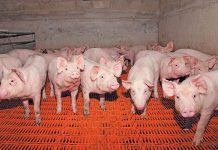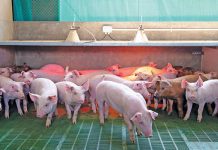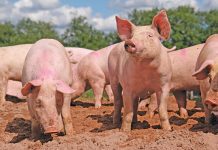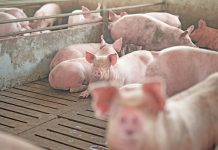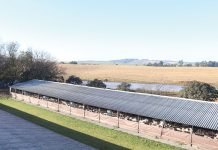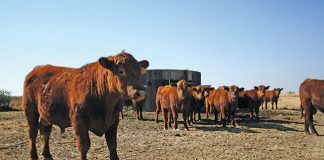
Photo: Wayne Southwood
You’ve done your homework. You have an overall view of what pig farming entails. You know there’s someone willing to buy your pigs. And above all, you can afford to pay your expenses until your first pigs are ready to sell.
The next step is to buy your pigs. As the South African Pork Producers’ Association (Sappa) points out, there are three basic steps to follow when buying pigs:
- Decide what type of pig will best suit your farm.
- Don’t buy other people’s problems.
- Plan a breeding programme that will fit your resources.
READ:Know-your-sheep-breeds:-Van-Rooy
Know your pigs
Breeds
Sappa recommends the following breeds:
- Large White: As the name suggests, this is a big animal. It is lean and active, can adapt to most climates and has a long, useful life in the breeding pen. The Large White produces good quality bacon and pork, and its ability to cross with, and improve, other breeds has also made it popular.
- SA Landrace: A Landrace is any indigenous and locally developed breed. In South Africa, this usually means an animal that can survive on both marginal and high potential grazing and is disease- and heat-tolerant. The Landrace is popular among non-commercial producers who slaughter mainly for domestic consumptio
- Duroc: This breed, with its drooping ears, originates from the eastern US. It has a high ratio of marbling fat to carcass fat. In other words, its meat is juicy and tender.
- Kolbroek: An indigenous breed, the Kolbroek is smaller than most other ‘modern’ breeds. It has sturdy legs, strong feet, and is extremely hardy. It is also a good forager and efficient converter of high-roughage rations.
All of these features make the Kolbroek ideally suited for free-range or smallholder systems.

![]()
Buying
Regardless of breed, there are several factors to be considered in order to avoid losses:
- Rather pay a higher price for a good pig than a lower price for an inferior pig that dies or fails to perform as expected. To make sure you’re getting a good quality animal, it’s important to examine it carefully.
- Ask the seller questions: How old is the pig? Has it ever been ill? Has it been vaccinated? If so, for which diseases? Has it been treated for parasites? If it’s an adult, has it ever bred? Why did the seller put the pig on the market?
- Study the animal while it’s lying down. Does it look comfortable and relaxed? Is it breathing regularly? There should be no wheezing or gasping. Only the chest should rise and fall – if the belly contracts, the pig is having difficulty breathing.
- Observe how the pig reacts. If you clap your hands, shout or whistle loudly, a healthy pig should react by looking at you.
- Examine the pig while it’s standing: Is it too fat or too thin? If you can see the hips, shoulders, ribs or backbone under the skin, it’s too thin. On the other hand, if it has rolls of fat around the neck, it is too fat and may develop leg and foot problems or not breed well.
- Study the animal’s overall appearance. Is the back straight? Is the coat shiny? Does the skin look clean and healthy? Are there any swellings on the head, body or limbs? Are the legs strong and straight? Does the pig walk normally?
- In particular, look out for the following: coughing or sneezing; rubbing against objects for prolonged periods to relieve itching; soft or watery dung (indicates diarrhoea), or small, hard, dry droppings (constipation).
In the next issue, we’ll discuss a selection and breeding programme that can be used on a small-scale farm with 20 or fewer breeding sows.
Sources: Farming with Pigs (compiled by the Western Cape department of agriculture); Guide to Small-scale Pig Farming (department of agriculture) by EH Kemm; the South African Pork Producers’ Association (www.sapork.com).
Get help!
Make sure you buy pigs from a farm known for its good quality animals, and where the management and standard of hygiene are excellent. The seller should be able to supply you with complete records so that the performance of the boar and his parents are known. When buying pigs for the first time, take someone along who has the necessary knowledge and experience. There are regulations for moving pigs – make sure that you comply with these.
For more information, as well as advice on which breed is best for your situation, contact the South African Pork Producers’ Association on 012 361 3920 or email [email protected]. Visit www.sapork.com.
This article was originally published in the 1 June issue of Farmers Weekly.


